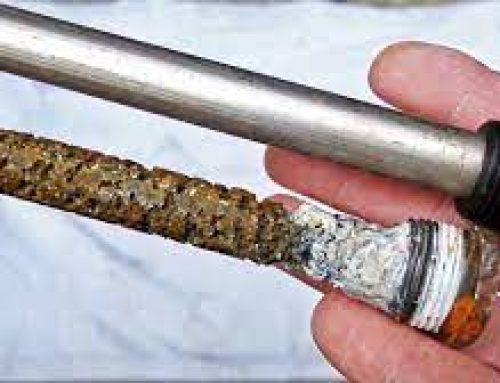Hard water can destroy plumbing and damage your clothes. But is a dedicated water softener worth it?
Water softeners were created to combat a surprisingly common problem: hard water. According to the U.S. Geological Survey, about 85 percent of American households have hard water, including homes with city water and well water. But what exactly is hard water and what can be done about? Glad you asked.
What Is Hard Water?
The term “hard water” may sound like an oxymoron, but it’s simply household water that contains high concentrations of dissolved minerals, specifically calcium and magnesium. These minerals don’t make water unhealthy to drink. They also are relatively undetectable through smell or taste, but they can be harmful just the same.
The effects of elevated mineral levels range from annoying to highly destructive. Hard water causes cloudy water spots on sinks, dishes, silverware, and shower enclosures. White, crusty deposits form on tea kettles and coffee pots. Hard water also dramatically reduces the lathering and rinse-ability of laundry detergent, body soap, and shampoo.
As a result, laundered clothes appear gray and faded. Bathing and showering in hard water makes your skin feel dry and itchy. Because shampoo doesn’t lather up very well in hard water, shampooing leaves your hair feeling and looking limp and dry.
Now, the above mentioned effects of hard water are annoying and irritating, but not terribly problematic. That is, until you consider the harmful effect hard water has on plumbing systems, fixtures, and appliances.
As water runs through the supply pipes and then out the faucets, shower heads, ice maker, washing machine, water heater, boiler, and dishwasher, it’s leaving behind hard, crusty mineral deposits. At first, these small deposits are harmless, but over time they build up and eventually clog pipes, seize valves, and plug aerators and shower heads. In extreme cases, hard-water deposits can dramatically restrict the water flow, which puts undue pressure on the whole plumbing system.
What Is a Water Softener?
Whole-house water softeners come in a variety of sizes and styles to accommodate the size of your home and family. The softener is installed in the basement, garage, utility closet or wherever water enters the house.
A typical water softener consists of a tall, narrow water-softener tank, and a short, wide brine tank. The softener tank is connected to the home’s water-supply line. A small-diameter fill tube connects the brine tank to the softener tank. And a discharge hose runs from the softener tank to a nearby drainpipe or drywell.
The softener tank is filled with specially formulated resin beads, which are permanently sealed inside the tank. The brine tank has a removable lid so you can fill it with salt or potassium chloride pellets.
Here’s a quick explanation of how the system works:
Water enters the top of the water-softener tank and percolates down through the resin beads. The resin has a negative charge, which attracts the positively charged minerals in the water (a process known as, ion exchange). The mineral deposits cling to the resin and the now-softened water exits the softener tank and flows throughout the house.
Sooner or later, however, the beads reach maximum capacity and can’t attract any more mineral ions. At that point, the softener tank must be regenerated, or, flushed clean. That’s where the brine tank comes in. An on-board computer calculates the amount of water that flows through the softener. When it reaches the pre-programmed setting, regeneration automatically begins. For a three-bedroom house and family of four, regeneration usually occurs every 12,000 gallons.
During regeneration, salty water from the brine tank flows up the fill tube and into the softener tank. A rinse cycle commences and the salty water washes the mineral deposits off the resin beads. The regenerated water and the mineral deposits are flushed out the discharge hose. The system then reverts back to softening the incoming water.
At some point, you’ll have to add more salt or potassium chloride pellets to the brine tank. How often you’ll need to add pellets depends on how much water you use. An average family of four typically needs to add one 50-pound bag of pellets each month.
Water softener costs vary widely depending on the size and make of the softener, but expect to pay between $2,000 and $2,500 for a typical system, including installation.
Kowality Plumbing is your quality source for home water filter systems, water softener systems, reverses osmosis, Phyn Plus – Moen Flo – Stream Labs, (smart water monitoring and auto shut off devices) throughout the greater Phoenix metroplex.
For More Information, Call 602-653-9230






